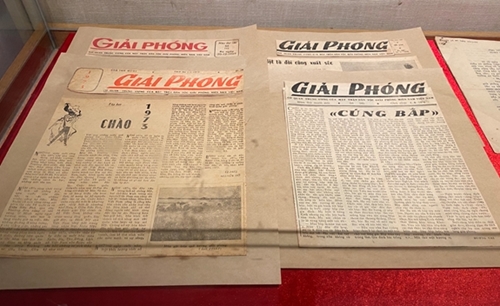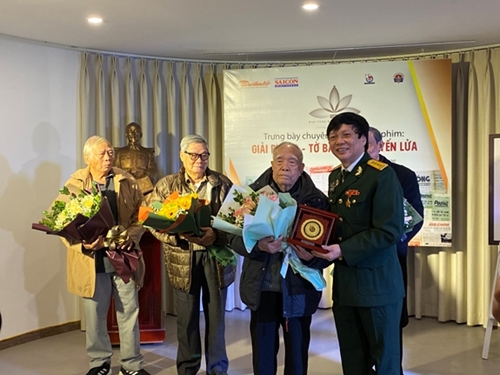December 19, 2020 | 19:30 (GMT+7)
Documentary about Liberation Newspaper introduced
PANO - The Vietnam Press Museum and other organizations and newspapers opened a theme exhibition and introduced a documentary entitled “The Liberation - the newspaper on the battlefield” in Hanoi on December 18.
    |
 |
|
Copies of the "Liberation" Newspaper showcased at the event |
The film was produced by the Vietnam Press Museum in October and directed and filmed by Eminent Artists Dao Anh Dung and Nguyen Hoang.
This first documentary reflects the Liberation Newspaper’s performance during historical revolutionary periods and fighting for national reunification.
This film is significant for not only history researchers and press students but also for those who are keen on studying Vietnamese press history in the anti-American resistance war and first years after national reunification.
In the framework of the program, journalist Kim Toan, who is over 80 years old, former reporter of the Liberation Newspaper and former Editor-in-chief of the Hai Phong Newspaper, former President of the Hai Phong Journalists’ Association and former Vice Secretary-General of the Vietnamese Journalists’ Association recalled his interesting stories about how he got information for articles under the bombardment and fire of the enemy.
Veteran journalist Nguyen Ho and Phuong Ha from the Liberation Newspaper also helped the audience further understand the journalists’ lives during the war and their articles about peace and noble values.
Addressing the event, journalist Senior Colonel Ho Quang Loi, Permanent Deputy Head of the Vietnamese Journalists’ Association and former deputy Editor-in-Chief of the People’s Army Newspaper emphasized the significance of the documentary and exhibits in honoring generations of press workers. He asked the museum to continue to collect valuable documents on the history of the Vietnamese press in general and the Liberation Newspaper in particular.
    |
 |
|
Veteran reporters of the newspaper honored at the event |
According to the museum’s director Tran Kim Hoa, the museum has collected 500 issues of the Liberation Newspaper, all published from 1969 to January 1977, and various documents and objects. In 2015, the museum also received several valuable original issues of the newspaper that serve as meaningful materials for younger press generations to study.
Translated by Mai Huong